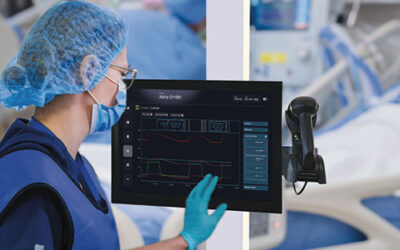In an age when technology, products and services are developing at what seems like breakneck speeds, it can be difficult to keep up with all the hardware and software advancements.
The healthcare industry in particular has been at the cutting edge of much of this change, as new technologies emerge aimed at putting healthcare in the hands of more citizens than ever before. Practitioners have likely heard of telemedicine and telehealth before in passing, but in today’s healthcare climate they are becoming core concepts that every physician should be aware of.
But semantic similarities aside, conflating telehealth and telemedicine is a recipe for confusion down the road. Especially when it comes to planning for adoption and integration of key services and technologies, knowing exactly what your clinic and its patients need – and what services are available to help meet those demands – is crucial.
Telemedicine opens new doors for physicians
While the terms “telehealth” and “telemedicine” are used more or less interchangeably, there are a few key differences that set the two concepts apart. The biggest demarcation point is the primary audience that each service is aimed at. Telemedicine efforts are generally directed exclusively toward physicians and health facility administrators.
According to the U.S. Department of Health Resources and Services Administration, telemedicine is defined as “the use of electronic communication and information technologies to provide or support clinical care at a distance.” This is a similarly broad definition as that of telehealth, but it’s characterized by a few key differences. Namely, telemedicine concerns itself almost exclusively with providing healthcare practitioners with the tools they need to reach a greater number of patients across a wider radius.
 Telemedicine technology allows doctors to consult with patients and other specialists remotely.
Telemedicine technology allows doctors to consult with patients and other specialists remotely.
Telehealth focuses on empowering consumers
In contrast to telemedicine, which focuses exclusively on providing additional tools for clinicians, telehealth takes a broader approach, and includes consumers and end-users in its target audience.
Telehealth refers to a loose definition of consumer-facing healthcare and health management solutions. This can include a wide variety of applications, not all of them clinical. For example, many companies have developed telehealth-centric apps that are designed to better connect consumers to healthcare professionals. While this is an important function, the proliferation of telehealth services is primarily a consumer concern, not a practitioner one. While clinical telemedicine services are designed to allow doctors and nurses to practice medicine more effectively over distances, telehealth apps form more of a support role, allowing for everything from connecting patients with providers to helping clinics manage training and personnel issues.
Comparing and contrasting
Despite the similarities in definitions, and even the fact that the many industry associations and organizations use the two terms interchangeably, clinicians should not only know the practical differences between telehealth and telemedicine, but also how these distinctions may impact their practice.
One significant difference is in application. Telehealth’s communication- and monitoring-based services are excellent for empowering patients with the ability to take a more active and autonomous role in managing chronic conditions and monitoring treatment. On the other side of the spectrum, telemedicine technology such as Web-based encounter management software like AGNES Interactive and a suite of high-tech clinical tools and telemedicine carts provide practitioners with a means to extend the effective range of their coverage.
“Telemedicine is of particular importance in rural areas where metropolitan hospitals can be hours away.”
This is of particular importance in rural areas where metropolitan hospitals can sometimes be hours away. In previous years, emergency medical situations would require that patients in need of acute specialty care be transported to larger urban medical centers – a process that can put financial strain on patients’ families and cost valuable treatment time. Even though telehealth apps can facilitate communication between patients and doctors, these services are no substitute for a consultation.
Telemedicine, however, is specifically intended to serve as an analogous stand-in for healthcare on par with what a patient would receive in person. Travel time and associated costs can be virtually eliminated, since doctors and nurses can not only communicate with patients in real time, but can also examine them and receive and process information as though they were in the room.
A holistic solution
All differences aside, telehealth and telemedicine are two slightly different segments of the healthcare industry that can and should converge to improve the availability and quality of care available for everyone. According to a report from the ATA, one factor linking these two similar concepts is the need for strong healthcare IT infrastructure to support these operations.
While both telemedicine and telehealth applications are still in relatively nascent stages for many healthcare organizations, opportunities for more effective integration are already becoming apparent. IT concerns such as network speed and security and data storage, combined with logistical concerns such as workflow integration and personnel training, have combined to present a potential future path for the development of these exciting healthcare technologies.
For more information and for advice on creating your own custom telemedicine solution, visit www.amdtelemedicine.com.





